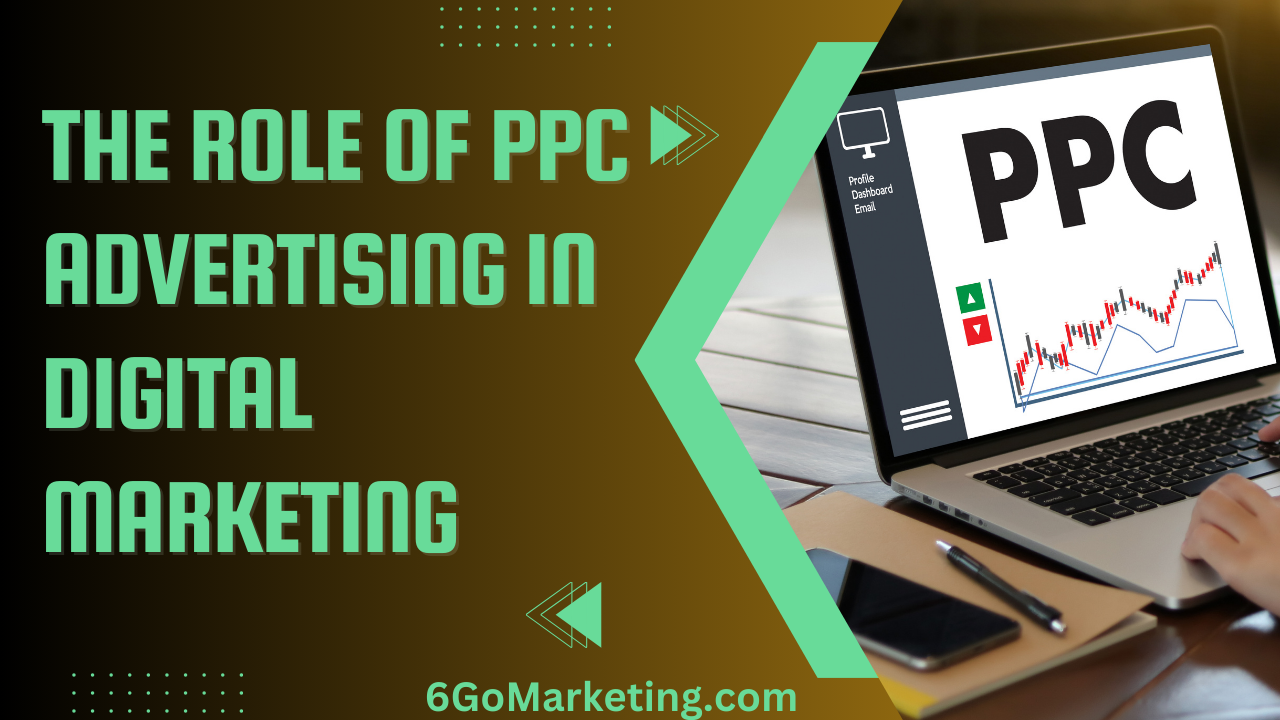In the fast-paced world of digital marketing, businesses are constantly seeking effective strategies to reach their target audience and drive conversions. Among the many tools available, Pay-Per-Click (PPC) advertising stands out as one of the most powerful and versatile methods for achieving these goals. PPC advertising allows businesses to place ads on search engines, social media platforms, and other websites, and only pay when a user clicks on their ad. This model offers a level of control and precision that is unmatched by other forms of advertising.
This blog post explores the critical role of PPC advertising in digital marketing, detailing its benefits, key strategies, and best practices. We will also delve into the various platforms where PPC can be employed, how it complements other marketing efforts, and its impact on overall digital marketing performance.
Understanding PPC Advertising
PPC advertising is a form of online advertising where advertisers pay a fee each time one of their ads is clicked. Unlike organic traffic, which requires time and effort to build, PPC offers instant visibility and the potential for immediate results. The most common types of PPC ads include search ads, display ads, social media ads, and shopping ads.
The PPC model is highly flexible, allowing advertisers to set budgets, target specific demographics, and adjust campaigns based on performance. This level of control makes PPC an essential component of any comprehensive digital marketing strategy. For instance, a furniture store can use PPC to promote a new sofa collection effectively.
Table 1: Common Types of PPC Advertising
| PPC Type | Description | Platform Examples |
|---|---|---|
| Search Ads | Text-based ads displayed on search engine results pages (SERPs) | Google Ads, Bing Ads |
| Display Ads | Visual banner ads shown on websites within a display network | Google Display Network, AdRoll |
| Social Media Ads | Ads shown on social media platforms, targeting specific audiences | Facebook Ads, Instagram Ads, LinkedIn Ads |
| Shopping Ads | Product-based ads shown on search engines, often with images | Google Shopping, Bing Shopping |
The Benefits of PPC Advertising
PPC advertising offers numerous benefits that make it an indispensable tool in digital marketing. Below are some of the key advantages of incorporating PPC into your marketing strategy:
- Immediate Results:
- Unlike SEO, which can take months to show significant results, PPC advertising provides immediate visibility. As soon as your campaign is live, your ads can start appearing in front of potential customers. This makes PPC ideal for businesses looking to drive quick traffic, promote time-sensitive offers, or test new products.
- According to a study by WordStream, businesses typically see an average return of $2 for every $1 spent on Google Ads, highlighting the potential for high ROI with well-managed PPC campaigns.
- Precise Targeting:
- PPC platforms offer advanced targeting options that allow advertisers to reach specific audiences based on demographics, location, device, time of day, and more. This precision ensures that your ads are seen by the right people at the right time, increasing the likelihood of conversions.
- For example, Google Ads allows you to target users based on search intent, meaning you can show your ads to people who are actively searching for products or services like yours. This level of targeting is crucial for maximizing the effectiveness of your ad spend.
- Budget Control:
- PPC advertising gives you complete control over your budget. You can set daily or monthly limits, adjust bids based on performance, and pause or stop campaigns at any time. This flexibility ensures that you never exceed your budget and can optimize your spending for the best results.
- A report by HubSpot found that 46% of small businesses use PPC to control advertising costs while achieving measurable results. With the ability to monitor costs in real-time, businesses can ensure that every dollar spent contributes to their marketing goals.
- Measurable Results:
- One of the most significant advantages of PPC advertising is the ability to track and measure every aspect of your campaign. Metrics such as impressions, clicks, click-through rates (CTR), conversion rates, and cost per conversion are readily available, allowing you to analyze the performance of your ads and make data-driven decisions.
- This level of transparency is invaluable for optimizing campaigns, as it allows you to identify what’s working and what isn’t. By continually refining your approach, you can improve ROI and achieve better results over time.
- Complementary to Other Marketing Channels:
- PPC advertising works well alongside other digital marketing strategies, such as SEO, content marketing, and social media marketing. For example, running PPC campaigns in conjunction with SEO can help you dominate search engine results pages (SERPs) by capturing both paid and organic traffic. Additionally, PPC can be used to promote content, increase social media engagement, and retarget website visitors.
- A study by Google found that PPC ads combined with organic search results lead to a 50% increase in brand awareness. This synergy between PPC and other marketing channels can significantly enhance your overall digital marketing efforts.
Table 2: Benefits of PPC Advertising
| Benefit | Description | Impact on Digital Marketing |
|---|---|---|
| Immediate Results | Instant visibility and quick traffic generation | Fast ROI, effective for time-sensitive offers |
| Precise Targeting | Advanced targeting options based on demographics and behavior | Increased conversion rates, higher relevance |
| Budget Control | Set and manage budgets with flexibility | Cost-effective campaigns, no overspending |
| Measurable Results | Track and analyze campaign performance with detailed metrics | Data-driven decisions, continuous optimization |
| Complementary to Other Channels | Enhances the effectiveness of SEO, content, and social media | Increased overall marketing performance |
Key Strategies for Effective PPC Advertising
To maximize the effectiveness of your PPC campaigns, it’s essential to implement the right strategies. Below are some proven strategies to help you get the best results from your PPC advertising efforts:
- Keyword Research and Selection:
- Keywords are the foundation of any PPC campaign. Conduct thorough keyword research to identify the terms and phrases your target audience is using to search for products or services like yours. Use tools like Google Keyword Planner, SEMrush, or Ahrefs to find relevant keywords with high search volume and low competition.
- Consider using long-tail keywords, which are more specific and less competitive than broad keywords. Long-tail keywords often have higher conversion rates because they reflect a user’s intent more accurately. For example, instead of targeting “running shoes,” consider targeting “best running shoes for flat feet.”
- Ad Copy and Creative Optimization:
- Your ad copy and creative elements play a crucial role in attracting clicks and driving conversions. Write compelling, clear, and relevant ad copy that highlights the benefits of your product or service. Include a strong call-to-action (CTA) that encourages users to take the next step, such as “Shop Now,” “Get a Quote,” or “Learn More.”
- In addition to text ads, consider using visual elements like images or videos in display ads and social media ads. High-quality visuals can capture attention and convey your message more effectively.
- Landing Page Optimization:
- A well-optimized landing page is essential for converting PPC traffic into leads or sales. Ensure that your landing page is relevant to the ad and provides a seamless user experience. Key elements of a successful landing page include a clear headline, persuasive content, a strong CTA, and a user-friendly design.
- According to Unbounce, the average landing page conversion rate is 9.7%. To improve your conversion rate, conduct A/B testing on different elements of your landing page, such as headlines, CTAs, and images. This data-driven approach allows you to optimize your landing page for maximum effectiveness.
- Audience Targeting and Segmentation:
- Take advantage of advanced audience targeting options to reach specific groups of users. Segment your audience based on demographics, interests, behavior, and other factors. For example, you can create separate campaigns for new customers and returning customers, tailoring your messaging to each group.
- Remarketing is another powerful targeting strategy. By showing ads to users who have previously visited your website or interacted with your brand, you can encourage them to return and complete a purchase. Remarketing campaigns typically have higher conversion rates because they target users who are already familiar with your brand.
- Bid Management and Budget Allocation:
- Effective bid management is key to maximizing your PPC budget. Use automated bidding strategies to adjust your bids based on performance and campaign goals. For example, Google Ads offers automated bidding options like Target CPA (Cost Per Acquisition) and Target ROAS (Return on Ad Spend) that optimize bids to achieve specific objectives.
- Regularly monitor your budget allocation to ensure that you are investing in the most profitable campaigns. If certain keywords, ads, or campaigns are underperforming, consider reallocating your budget to higher-performing areas.
Table 3: Key Strategies for Effective PPC Advertising
| Strategy | Description | Benefit |
|---|---|---|
| Keyword Research and Selection | Identify relevant, high-converting keywords | Increased relevance, higher click-through rates (CTR) |
| Ad Copy and Creative Optimization | Write compelling ad copy and use high-quality visuals | Attract more clicks, improve ad engagement |
| Landing Page Optimization | Create a seamless user experience on the landing page | Higher conversion rates, improved user satisfaction |
| Audience Targeting and Segmentation | Target specific audience groups with tailored messaging | Increased relevance, better ROI |
| Bid Management and Budget Allocation | Optimize bids and allocate budget based on performance | Maximize ROI, efficient use of ad spend |
The Role of PPC Across Different Digital Marketing Channels
PPC advertising is versatile and can be effectively integrated with various digital marketing channels. Below are some of the key ways PPC complements and enhances other marketing efforts:
- PPC and SEO:
- PPC and SEO (Search Engine Optimization) are often seen as complementary strategies. While SEO focuses on organic search results, PPC targets paid search placements. By combining both, you can maximize your visibility on search engine results pages (SERPs). For example, even if your website ranks well organically, a PPC ad can reinforce your presence and capture additional clicks.
- Additionally, data from PPC campaigns can inform your SEO strategy. For example, the keywords that perform well in PPC can be targeted for SEO optimization. Conversely, high-performing organic keywords can be incorporated into PPC campaigns for broader coverage.
- PPC and Content Marketing:
- PPC can be a powerful tool to promote content marketing efforts. By using PPC to drive traffic to blog posts, whitepapers, webinars, and other content, you can increase engagement and generate leads. Content promotion through PPC is especially effective for reaching a wider audience quickly and amplifying the reach of your content.
- Furthermore, by analyzing the performance of your content via PPC, you can gain insights into what resonates with your audience. This data can then be used to refine your content strategy and create more targeted, high-performing content.
- PPC and Social Media Marketing:
- Social media platforms like Facebook, Instagram, LinkedIn, and Twitter offer robust PPC advertising options that allow you to target users based on their interests, behaviors, and demographics. By integrating PPC with your social media strategy, you can boost brand awareness, drive traffic, and generate leads. an approach that can be refined with the expertise of a social media ads agency.
- Social media PPC ads can also be used for remarketing, allowing you to re-engage users who have previously interacted with your brand. Additionally, social media ads can complement organic social media efforts by reaching users who might not follow your brand but match your target audience profile.
- PPC and Email Marketing:
- PPC and email marketing can work together to enhance customer engagement and conversion rates. For instance, you can use PPC ads to capture leads and grow your email list by promoting gated content, such as eBooks or webinars. Once you’ve acquired leads through PPC, you can nurture them through email campaigns, moving them further down the sales funnel.
- Additionally, segmented email lists can be used to create custom audiences for PPC campaigns, allowing you to retarget email subscribers with relevant ads across the web and on social media platforms.
- PPC and Affiliate Marketing:
- PPC advertising can complement affiliate marketing efforts by driving targeted traffic to affiliate landing pages. By optimizing PPC campaigns for high-converting keywords and audiences, you can increase the chances of converting visitors into customers, which benefits both your business and your affiliates.
- Additionally, PPC campaigns can be used to test new offers or products before rolling them out to affiliates. This allows you to identify which offers resonate best with your audience, ensuring that your affiliates have the best possible chance of success.
Table 4: Integrating PPC with Other Digital Marketing Channels
| Channel | How PPC Complements It | Benefit |
|---|---|---|
| SEO | Increases visibility on SERPs, informs keyword strategy | Maximizes search presence, improves overall performance |
| Content Marketing | Promotes content to a wider audience, drives engagement | Amplifies content reach, generates leads |
| Social Media Marketing | Targets users based on interests and behaviors, supports remarketing | Boosts brand awareness, enhances social media strategy |
| Email Marketing | Captures leads for email campaigns, supports retargeting | Grows email list, improves conversion rates |
| Affiliate Marketing | Drives targeted traffic to affiliate offers, tests new products | Increases conversions, supports affiliate partners |
Measuring the Success of PPC Campaigns
Measuring the success of your PPC campaigns is essential for optimizing performance and achieving your marketing goals. Key performance indicators (KPIs) provide valuable insights into how well your campaigns are performing and where improvements can be made. Here are some of the most important KPIs to track:
- Click-Through Rate (CTR):
- CTR measures the percentage of users who click on your ad after seeing it. A high CTR indicates that your ad is relevant and compelling to your target audience. To improve CTR, focus on refining your ad copy, headlines, and visuals.
- Conversion Rate:
- Conversion rate is the percentage of users who complete a desired action (such as making a purchase or filling out a form) after clicking on your ad. A high conversion rate suggests that your landing page is effective and aligned with your ad’s messaging.
- Cost Per Click (CPC):
- CPC refers to the average amount you pay each time someone clicks on your ad. Monitoring CPC helps you manage your budget and ensures that you’re not overspending on clicks that don’t convert.
- Cost Per Conversion (CPA):
- CPA measures the average cost of acquiring a conversion through your PPC campaign. It’s calculated by dividing the total cost of your campaign by the number of conversions. Lowering your CPA is crucial for maximizing ROI.
- Return on Ad Spend (ROAS):
- ROAS calculates the revenue generated for every dollar spent on your PPC campaign. A high ROAS indicates that your campaign is profitable and delivering a strong return on investment.
- Impression Share:
- Impression share is the percentage of impressions your ad receives compared to the total number of impressions it was eligible for. A low impression share may indicate that your bids are too low or that your budget is insufficient to compete effectively.
Table 5: Key Performance Indicators for PPC Campaigns
| KPI | Description | Importance |
|---|---|---|
| Click-Through Rate (CTR) | Percentage of users who click on your ad after seeing it | Indicates ad relevance and effectiveness |
| Conversion Rate | Percentage of users who complete a desired action | Measures landing page effectiveness and campaign alignment |
| Cost Per Click (CPC) | Average cost of each click on your ad | Helps manage budget and avoid overspending |
| Cost Per Conversion (CPA) | Average cost of acquiring a conversion | Essential for maximizing ROI |
| Return on Ad Spend (ROAS) | Revenue generated for every dollar spent on ads | Determines profitability and campaign success |
| Impression Share | Percentage of impressions received versus eligible impressions | Reflects competitiveness and ad visibility |
Best Practices for PPC Advertising
To achieve the best results from your PPC campaigns, it’s important to follow industry best practices. Below are some key practices to consider:
- Continuous A/B Testing:
- A/B testing involves running two versions of an ad, landing page, or other campaign element to determine which performs better. Regularly test different headlines, ad copy, visuals, and CTAs to identify what resonates most with your audience. Use the insights gained from A/B testing to optimize your campaigns for better performance.
- Regular Performance Reviews:
- Monitor your PPC campaigns regularly to ensure they are meeting your goals. Analyze your KPIs, review your budget allocation, and identify any areas where performance is lagging. Make data-driven adjustments to improve your results over time.
- Leverage Negative Keywords:
- Negative keywords prevent your ads from showing for irrelevant searches. By adding negative keywords to your campaigns, you can reduce wasted ad spend and improve the quality of your traffic. For example, if you sell high-end products, you might use “cheap” as a negative keyword to avoid attracting bargain hunters.
- Optimize for Mobile:
- With the increasing use of mobile devices, it’s essential to ensure that your PPC campaigns are optimized for mobile users. Create mobile-friendly ads and landing pages, and use mobile-specific bid adjustments to target users effectively on smartphones and tablets.
- Focus on Quality Score:
- Quality Score is a metric used by Google Ads to assess the relevance and quality of your ads, keywords, and landing pages. A higher Quality Score can lead to lower CPCs and better ad placements. To improve your Quality Score, ensure that your ads are relevant to your keywords, your landing pages provide a good user experience, and your CTR is strong.
Table 6: Best Practices for PPC Advertising
| Best Practice | Description | Benefit |
|---|---|---|
| Continuous A/B Testing | Regularly test different ad elements to find the best-performing versions | Optimized campaigns, improved performance |
| Regular Performance Reviews | Monitor KPIs and adjust strategies based on data | Enhanced results, better budget management |
| Leverage Negative Keywords | Use negative keywords to exclude irrelevant searches | Reduced wasted spend, higher-quality traffic |
| Optimize for Mobile | Ensure ads and landing pages are mobile-friendly | Better user experience, increased conversions |
| Focus on Quality Score | Improve ad relevance and user experience to boost Quality Score | Lower CPCs, better ad placements |
Conclusion
PPC advertising plays a vital role in digital marketing, offering businesses a powerful and flexible tool to drive traffic, generate leads, and boost sales. With its immediate impact, precise targeting, and measurable results, PPC is an essential component of any comprehensive digital marketing strategy.
By implementing the right strategies, integrating PPC with other marketing channels, and continuously optimizing your campaigns, you can achieve significant improvements in your marketing performance and ROI.
This blog post has explored the role of PPC advertising in digital marketing, highlighting its benefits, key strategies, and best practices. By following the insights and recommendations provided here, businesses can unlock the full potential of PPC advertising and achieve their digital marketing goals.







